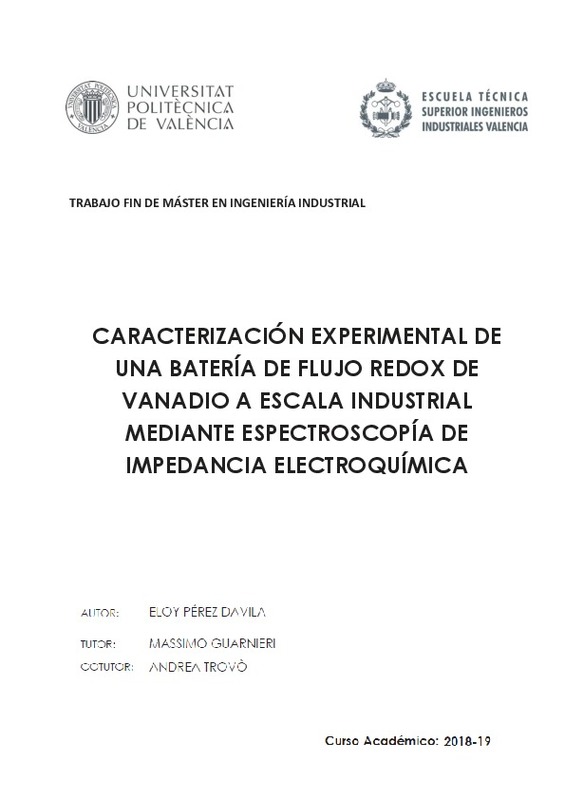JavaScript is disabled for your browser. Some features of this site may not work without it.
Buscar en RiuNet
Listar
Mi cuenta
Estadísticas
Ayuda RiuNet
Admin. UPV
Caracterización experimental de una batería de flujo redox de Vanadio a escala industrial mediante espectroscopía de impedancia electroquímica
Mostrar el registro completo del ítem
Pérez Davila, E. (2019). Caracterización experimental de una batería de flujo redox de Vanadio a escala industrial mediante espectroscopía de impedancia electroquímica. http://hdl.handle.net/10251/141857
Por favor, use este identificador para citar o enlazar este ítem: http://hdl.handle.net/10251/141857
Ficheros en el ítem
Metadatos del ítem
| Título: | Caracterización experimental de una batería de flujo redox de Vanadio a escala industrial mediante espectroscopía de impedancia electroquímica | |||
| Autor: | Pérez Davila, Eloy | |||
| Director(es): | Sanchís Arnal, Ricardo Del Col, Davide Guarnieri, Massimo | |||
| Entidad UPV: |
|
|||
| Fecha acto/lectura: |
|
|||
| Resumen: |
[ES] Este TFM se realiza en el Energy Storage and Conversion Laboratory de la Universidad de Padova y se centra en el estudio experimental de una batería de flujo redox de vanadio de escala industrial mediante realización ...[+]
[EN] This TFM is developed at the Energy Storage and Conversion Laboratory of the University of Padova and focuses on the experimental investigation of an industrial size vanadium redox flow battery of 9 kW/27kWh by ...[+]
|
|||
| Palabras clave: |
|
|||
| Derechos de uso: | Reserva de todos los derechos | |||
| Editorial: |
|
|||
| Titulación: |
|
|||
| Tipo: |
|
recommendations
Este ítem aparece en la(s) siguiente(s) colección(ones)
-
ETSII - Trabajos académicos [10528]
Escuela Técnica Superior de Ingenieros Industriales






